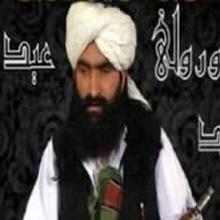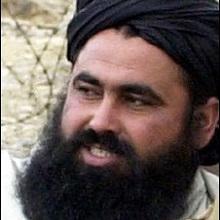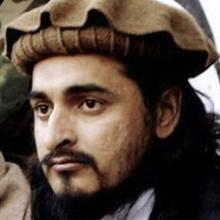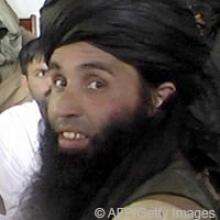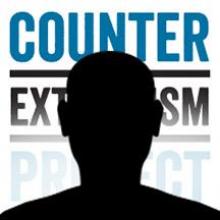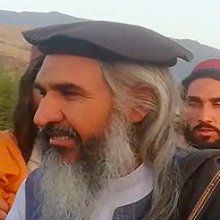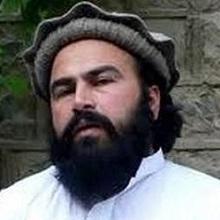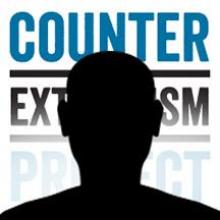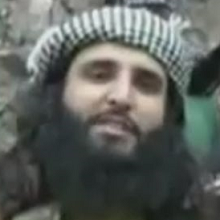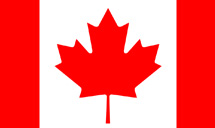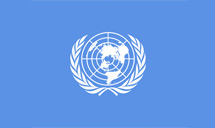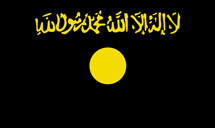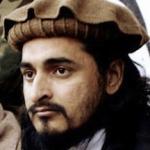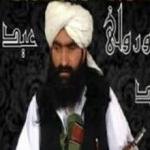Executive Summary:
Tehrik-i-Taliban Pakistan (TTP) is a conglomerate of around 40 tribal and non-tribal Pakistani militant groups fighting against the state of Pakistan; the local ISIS affiliate, Islamic State Khorasan Province (ISIS-K); and U.S.-led coalition forces. As an ally of the Afghan Taliban, the TTP also fought the U.S.-backed Afghan government prior to the latter’s defeat in August 2021. The TTP was founded in late 2007 by a group of Pakistani militants who had previously fought in Afghanistan alongside both the Taliban and al-Qaeda, and the group has maintained close ties to both organizations since.
TTP militants regularly conduct attacks against civilians, security forces, and political leaders in both Pakistan and Afghanistan, using everything from small arms to IEDs to suicide bombers. Among their most high-profile attacks was the December 16, 2014, attack on an army-run school in Peshawar, Pakistan, in which nine militants killed 145 people, including 132 children, using grenades, guns, and suicide vests. Under its first two commanders, the TTP also claimed responsibility for an attack on a U.S. immigration center in New York that killed 13 in April 2009 and an attempted car bombing in New York City’s Times Square in May 2010.
While U.S.-led coalition forces in Afghanistan regularly conducted drone strikes on TTP commanders and fighters since the group was formed, TTP capabilities grew throughout the late 2000s and early 2010s. It was not until the TTP’s second emir was killed in October 2013 that the group faced its first real crisis. The appointment of the unpopular Maulana Fazlullah as the new commander by the TTP’s divided Shura Council led to major internal divisions and defections in 2013, 2014, and 2015. This internal crises coincided with a major military operation launched by Pakistan from 2014 through 2017 that killed more than 3,000 TTP fighters, according to the Pakistani military, and led to the dispersion of TTP cells across Pakistan and major relocations into Afghanistan. These developments played a significant role in the emergence of a new ISIS affiliate, ISIS-K, in South and Central Asia in June 2015, headed by a recently defected TTP commander.
The TTP remained weak during Fazlullah’s tenure, but his death in 2018 and succession by Noor Wali Mehsud led the group to regain much of its previous prestige and strength. Mehsud’s efforts culminated in a string of mergers announced in July 2020 with eight rival militant groups, including three which had defected from the TTP in 2014. The merger negotiations were reportedly moderated by officials from either al-Qaeda or the Haqqani network. Two of the merging groups were Pakistan-based al-Qaeda affiliates and two others were powerful local North Waziristan factions.
These unifications significantly strengthened the TTP, ended inter-factional fighting that had occurred since 2013, and led to a steep rise in TTP attacks. In 2020, for the first time, the TTP began participating heavily in Taliban offensives in eastern and southeastern Afghanistan. The Taliban’s victories in Afghanistan throughout 2020 and 2021, culminating in their capture of Kabul on August 15, 2021, have further bolstered the TTP’s position. The Taliban freed at least 800 TTP prisoners from Kabul, including the TTP’s founding deputy emir. According to TTP expert Abdul Sayyed, credible reports suggest that the group’s emir, Noor Wali Mehsud, moved to Kabul following the Taliban’s victory.
The TTP carried out at least 149 attacks in 2020 and more than 100 in the first eight months of 2021, compared to just 30 in 2019. In January 2022, media sources reported that the group carried out more than 45 attacks in December 2021, the highest in any month of 2021. Just four days after the Taliban captured Kabul in August, Mehsud renewed his pledge of loyalty to them and congratulated them on their victory. Meanwhile, TTP’s leadership have reportedly relocated from eastern Afghanistan to the al-Qaeda–aligned Haqqani network strongholds in the southeast of the country.
Given the TTP’s ongoing attacks against Pakistan, on November 8, 2021, Pakistan’s government agreed to a one-month ceasefire with the TTP while the parties conducted peace negotiations in Afghanistan facilitated by the Afghan Taliban. Although the two sides agreed to a month-long ceasefire, on December 9, the TTP unilaterally ended the ceasefire, claiming that the Pakistani government never released TTP detainees and never sent a second negotiation team to continue the meetings.
In an attempt to revive peace efforts between Pakistan and the TTP, on January 9, 2022, Pakistan sent a delegation to Afghanistan to hold talks with the TTP. The talks between the Pakistani delegation and the TTP’s leadership council—including Mehsud—took place in Paktika, southeastern Pakistan and were mediated by the Afghan Taliban. The TTP allegedly demanded the release of 100 fighters in Pakistani prisons as well as the implementation of sharia law in Pakistan’s tribal belt. The Pakistani government demanded a nationwide truce and offered to release half of the 100 prisoners. The TTP did not agree to the conditions.
However, the TTP and the Pakistani government restarted peace talks in May 2022. The two sides originally agreed on an Eid ceasefire that would last for 10 days and would begin on May 10. On May 18, TTP members agreed to extend the ceasefire until May 30. The peace talks were hosted by Afghan Taliban leaders in Kabul, Afghanistan. According to media sources, Islamabad demanded that the Afghan Taliban prevent TTP militants from using Afghan territory to launch attacks against Pakistan.
Doctrine:
The TTP’s main adversaries since its formation have been the state of Pakistan and its security forces. This animosity is rooted in the group’s claim that Pakistan’s stance towards the United States changed following the September 11, 2001, attacks, with Pakistan beginning to support the U.S. operations against al-Qaeda and the Afghan Taliban. The TTP’s founding leadership and rank and file had spent the decade preceding the group’s formation fighting alongside both al-Qaeda and the Afghan Taliban in Afghanistan, and the tribal militants who would later form the TTP harbored al-Qaeda members in Pakistan following the 2001 invasion of Afghanistan.
The TTP’s stated goals upon its creation included enforcing sharia; creating a united front against NATO forces in Afghanistan while performing “defensive jihad against the Pakistan army;” reacting militarily if Pakistan does not end operations in Swat District and North Waziristan; removing all Pakistani military checkpoints in the Federally Administered Tribal Areas (FATA); demanding the release of the Red Mosque Imam Abdul Aziz, whom the Pakistani government arrested in July 2007; and refusing to take part in future peace deals with Pakistan’s government.
In a July 2021 interview, Noor Wali Mehsud stated that the TTP’s enemy is the Pakistan security forces and that the group’s goal is to “take control of the Pakistani tribal border regions and make them independent.” This the was the first time the TTP has publicly asserted this goal, and reflects changes Mehsud has implemented since his appointment as emir in 2018. This change in aims also coincides with new attempts by Mehsud to court other anti-state nationalist armed groups in Pakistan, particularly the Pashtun Tahafuz (Rights) Movement and Baloch insurgents.
Organizational Structure:
The TTP consists of around 40 tribal and non-tribal factions operating in both Pakistan and Afghanistan. In its early years, the TTP operated as a very loose conglomeration of generally like-minded insurgent groups based in the FATA in western Pakistan. The main three factions were led by Baitullah Mehsud, founder of the TTP, and Hafiz Gul Bahadur and Mullah Nazir, who formed their own sub-group merger called Muqami Tehrik-e-Taliban (Local Taliban Movement) in 2008. Both Nazir and Bahadur opposed Mehsud’s support for attacking Pakistani security forces. Each faction conducted attacks independently from one another and relied on their own logistical lines to supply their fighters. However, in February 2009, the three commanders formed a new alliance and redoubled the TTP’s efforts in Afghanistan, as well as increasing attacks in Pakistan, despite Bahadur’s objections to the latter.
This union continued following Baitullah Mehsud’s death and the appointment of Hakimullah Mehsud as the new TTP emir. Hakimullah also increased the TTP’s ties to al-Qaeda, which supported the group with training and financing. Hakimullah’s death in 2013 and his replacement by Mullah Fazlullah meant that for the first time, the TTP was not led by a member of the powerful Mehsud tribe. Fazlullah’s appointment weakened tribal support for the group, led to fractionalization and defections of powerful sub-groups, and coincided with increasingly violent attacks against civilians and non-Sunnis, including the 2014 Cadet School attack which killed and wounded hundreds of children and was condemned by the Taliban. Following Fazlullah’s appointment, the TTP split into the Shahryar Mehsud, Khalid Sajna, and Asmat Muawiya factions. Meanwhile, TTP fighters continued to disperse into urban areas, a process that began in late 2009 under the group’s second emir, Hakimullah.
Most significantly, Fazlullah’s appointment and subsequent internal division led to the TTP commanders of the Orakzai Tribal District, Shaikh Maqbool and Hafiz Saeed Khan, defecting from the group and forming a new ISIS affiliate, ISIS-K, in January 2015. In total, three TTP factions defected to ISIS-K: the Bajaur Faction, the Oraknzai Faction, and the Jundullah Faction. The defection of these geographically-concentrated factions resulted in the immediate weakening of the TTP (and strengthening of ISIS-K) in Nangahar, Afghanistan, and North Waziristan, Pakistan.
The TTP returned to Mehsud tribal control following Fazlullah’s death in June 2018 and the appointment of Mufti Noor Wali Mehsud. Once in power, Mehsud worked to reunify the TTP’s base, centralize its command structure, and refocus TTP operations on security forces and political parties rather than the civilian targets of previous years. These reforms were listed in a December 2018 “Code of Conduct,” which, among its 67 points, reiterated that fighters of each TTP faction must obey their factional emir, who in turn must obey the TTP’s emir (Mehsud). The document focuses heavily on how to avoid and address inter- and intra-factional conflict, including each faction establishing a “corrective center” for its members and a six-person shura council that maintains contact with the central shura and helps advise and guide the faction.
Further, the “Code of Conduct” sought to fix the damage caused by Fazlullah’s rule by codifying what is and is not a permissible target. Mehsud explicitly banned attacks on educational institutions, religious seminaries, public gatherings, and markets—all heavily targeted during Fazlullah’s tenure—while specifically labeling NGOs and “obscene” institutions as legitimate targets, along with Pakistani military, state, and political affiliates. Mehsud further stated that only he and his deputy are allowed to choose targets, and that any TTP commander or fighter who acts independently will be punished.
These efforts culminated in a string of major mergers announced in July 2020 in which eight rival factions, including three which had defected from the TTP in 2014, agreed to join the group under Mehsud’s command. The unification negotiations were reportedly moderated by officials from either al-Qaeda or the Haqqani network. Two of the merging groups were Pakistan-based al-Qaeda affiliates and two others were powerful North Waziristan factions. The mergers significantly strengthened the group, put an end to the inter-factional fighting that had occurred since 2013, and led to a steep rise in TTP attacks. Furthermore, in December 2020 the TTP claimed its first attack in the Orakzai Tribal District since its branch there broke away to form ISIS-K in 2015. The location and brutality of the attacks has led some analysts to suspect that parts of ISIS-K have rejoined the TTP.
On December 20, 2022, in a move to further challenge the sovereignty of the Pakistani government, the TTP declared the formation of a new parallel government. Their parallel government reportedly is comprised of a Cabinet of Ministers, which include portfolios on defense, education, political affairs, fatwas, intelligence, economic affairs, and construction. The TTP’s Ministry of Defense is reportedly led by Mufti Hazrat Deroji, a U.S.-designated terrorist.
Estimates on the TTP’s size vary. In 2009, shortly after the group officially formed, local journalists assessed its strength at 12,000 local fighters and 4,000 foreign fighters, mostly from the Middle East and Central Asia. A 2012 Military Balance report on non-state armed groups listed the TTP’s strength at 20,000 to 25,000 fighters, while a 2015 report by International Relations Insight and Analysis put the group at anywhere from 1,000 to 10,000. A late 2019 U.S. Defense Department report put the group at 3,000 to 5,000 fighters, while a February 2021 U.N. Security Council report noted that the TTP has a troop size in the range of 2,500 to 6,000 fighters.
Financing:
The TTP’s financial networks during its early years were difficult to track, but locals believed the group relied on taxing trucks that passed through its territory, ransoming captured western journalists, and funds from al-Qaeda. According to a private security analyst in Pakistan in 2009, the TTP also relied heavily on the trade of counterfeit cigarettes, which may have accounted for 20 percent of their funding at the time.
In 2010, a GlobalPost report alleged that the TTP also imposed jizya (a sharia-mandated tax on non-Muslims living in Muslim lands) on the Sikh minority in areas under their control.
In recent years, TTP financing has come from four main sources: kidnappings, natural resources, extortion and taxation of locals, and donations and gifts.
Recruitment:
The TTP originated as a Pashtun-centric organization but gradually expanded its recruitment base so that it now includes ethnic groups from across Pakistan and publishes much of its official material in Urdu, Pakistan’s national language. The group has always employed women as fighters but has made increased efforts to recruit women into operational roles in recent years. In August 2017, the TTP published an English-language magazine calling on Pakistani women to take on new roles within the group outside of their traditional jobs running propaganda, recruitment, finance, and logistical networks. According to TTP and ISIS-K expert Dr. Amira Jadoon, this shift was likely prompted by recruitment difficulties the TTP faced following the formation of ISIS-K in 2015.
In its early years, many local tribesmen and non-tribal youth were driven to the organization thanks to the heavy-handed tactics of the Pakistani security forces in Pakistan’s tribal areas, such as the July 2007 “Red Mosque Operation” that spurred the formation of the TTP later that year. The security forces’ attack on the mosque and subsequent promotion of the attack by al-Qaeda and tribal leaders, including Osama Bin Laden, also pushed many non-tribal and non-Pashtun students living in cities to join the TTP.
By 2008, the TTP had fighters from all seven tribal agencies in the FATA region, as well as members from the North-West Frontier Province (NWFP) districts of Swat, Bannu, Tank, Lakki Marwat, Dera Ismail Khan, Kohistan, Buner, and Malakand.
Training:
The TTP operates training camps throughout its strongholds in Pakistan’s tribal region, particularly in South and North Waziristan. Many of the TTP’s founders had trained in al-Qaeda training camps in Afghanistan prior to 2007, and this relationship continued after the TTP’s creation, with al-Qaeda providing both direct and indirect support to TTP training camps. As recently as 2017, third party factions allied to both al-Qaeda and the TTP worked as interlocutors, facilitating attack planning and shared training between the two groups.
Also Known As:
- Tehrik-e-Taliban Pakistan
- Tehrik-e-Taliban
- Pakistani Taliban
- Tehreek-e-Taliban
- Tehrik Taliban-I-Pakistan
- Tehreek-e-Taliban Pakistan
- Tehrik-E Taliban Pakistan
